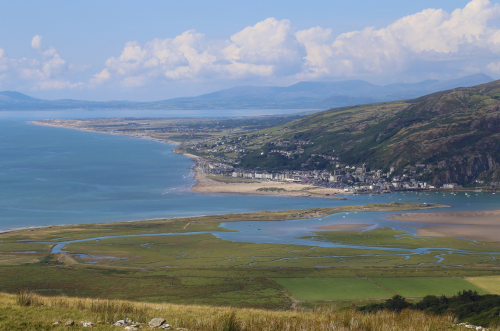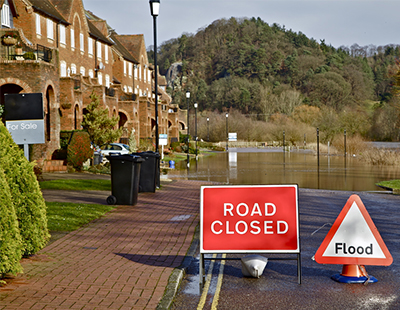
New analysis by insurance giant Aviva reveals that one in every 13 new homes built in England in the last decade sit in a flood zone - the equivalent of almost 110,000 properties.
Aviva says that since 2013/14, some 1,355,330 new homes have been completed in England with eight per cent - or 109,017 - built in areas categorised as national flood zone three, which represents the highest risk from flooding.
Some of these properties will be protected by flood defence systems but some locations may have no defences in place. This number excludes those built in 2022/23 for which figures are not yet available.
This is despite homes built since 2009 being excluded from the Flood Re reinsurance scheme which was set up in 2016 to improve the affordability and accessibility of flood insurance to homes in high risk areas.
Furthermore, research commissioned by Aviva among residents of homes built in the last five years reveals that 59 per cent believe their property is at risk from flooding, compared with 41 per cent of residents of homes built pre-2018. Some 19 per cent believe the location of their home is unsuitable due to the potential risk from flooding.
Many new build homes have experienced some damage since they were built. According to the research, one in eight new build residents say their home has been affected by flooding inside and 16 per cent of new homes have suffered a flood in the garden.
An Aviva spokesperson says: “It has been heartbreaking to see the devastation caused by flooding during recent winter storms. Sadly, some homes have flooded multiple times and inevitably, many affected properties will be on newer developments.
“It’s concerning that almost 110,000 new homes have been built in the last decade in a flood zone, leaving thousands of homeowners and tenants at risk. Crucially, these homes are not covered by the Flood Re insurance scheme and many may have been constructed without flood resilience. Not only are these newly-built homes at high risk, they also face the prospect of repeated flooding and may not be protected by flood defences to prevent or limit flood damage.
“It's worrying that many newly-built homes have already suffered a flood within five years of construction. This suggests the homes may have been built in unsuitable locations to standards which are unable to withstand flooding. But the research reveals wider concerns about construction which could leave these homeowners and tenants at risk from other climate events, including hot, dry weather.
“If we are to prevent more scenes of devastation caused by extreme weather, we need to work collectively to change where and how we build. By building houses that are climate-ready and able to withstand the multiple impacts of climate change we can provide safe and sustainable homes for our future generations.”
Want to comment on this story? Our focus is on providing a platform for you to share your insights and views and we welcome contributions.
If any post is considered to victimise, harass, degrade or intimidate an individual or group of individuals, then the post may be deleted and the individual immediately banned from posting in future.
Please help us by reporting comments you consider to be unduly offensive so we can review and take action if necessary. Thank you.

















.png)






Join the conversation
Jump to latest comment and add your reply
Planning should NOT be granted if building on a flood area 🫣🫣 how the hell 👺 has this been allowed 🤷♂️🤷♂️
Simon, agreed but this is a BS article by an insurance company to raise more money out of people in places that don’t flood.
I had a renewal quote for an house I own and they said it’s a high risk of flood so we cannot cover? I live next door to the property and have done for over twenty years and it’s never flooded…?!?!
Most of the insurance companies are owned by the big four banks, coincidence??
Simon,
actually decades ago, Local Planning Authorities of all colours used to refuse planning permission for new homes in flood plains. Then Mrs. Thatcher (though she made some better choices later) appointed her Transport Secretary Nicholas Ridley (we called 'Old Nick' as in the Devil) as Environment Secretary: he stopped councils refusing permission for housing on floodplain grounds. If they tried he would over-rule them and make them pay (costs).
His stupid free-market, laissez-faire reasoning (I wouldn't call it logic) was that the market would stop people buying homes where there was a flood risk.
As we anticipated, it didn't; and more people bought increasing numbers of homes, affected by more and more floods over time; which will happen again and again (likely with increasing frequency) for the probably hundreds of years these homes may last. (Don't bank on the Environment Agency having money to build defences, they can't do all they need to now and so are having to give up some land areas to the sea).
In the end, it is all of us insured people who continue to pay for this -completely foreseeable- gross Ridley mistake, through the Flood Re reinsurance scheme; not the long-dead culprit (or his party). Unlike s21, the loss of which may be reversed in coming years (like the 1988 Housing Act reversed the Rent Acts), it is hard to see how this will be resolved-completely impractical when you think about it.
The article does actually say that some homes can be flood-defended, or built to avoid worse effects (I know some different examples which don't rely on 'last-ditch' stopping water lapping at the door).
In the past certainly, flood risk maps didn't always reflect the true flood risk, which MAY explain Peter WDIB's experience. I own a couple with some degree of flood risk according to the maps, but haven't flooded in 50 years. For new developments, the actual risk is (or should be) ascertained on a site by site basis during the planning application process. (Though we do know developers' sales teams aren't always transparent - like with previously contaminated land.)
But as the last paragraph of the article implies, this may change in the future; and storm return periods (e.g. 1 in 100 years) become closer together/more frequent with climate change (some already 'baked-in'). If you choose to believe that it isn't (at least in part) man-made, or that mankind can do nothing-at-all to reduce the ill-effects, go argue that with the hundreds of thousands clever scientists: don't bother me! Sorry, I had enough before retirement.
I had hoped to build a new house for rent (not a high-storey shoe-box BTR) with s21 in place. If sense prevails I still might, to make up for the loss of the house I've recently had to serve a s21 on on before we loose it.
In any case, I don't like at all the sort of version of the Future Homes Standard we probably should be having to meet; not yet accepted by the politicians. While understanding the reasoning, my blame and annoyance is reserved for those who bequeathed us the mess by varying degrees/stages of denial in the past. As the old adage says; "a stitch in time saves nine". This could gave been avoided!
Readers will know how s24 and s21 are a slow-motion 'car crash'. I've seen the other looming car crash coming over decades.
Lastly, if the figure of new homes subject to flood risk -without mitigation- are as high as may be implied by the article, one wonders if the buyers and their legal advisers are checking out properly the risks and differing causes/types of flooding (pluvial, fluvial, groundwater, tidal/coastal etc.). Having commissioned one, I'd check a local Strategic Flood Risk Assessment (SFRA) as one information source if I were to buy new property. Though now it is sell, rather than buy.
Don’t build on low ground water runs down.
Don’t expect Councils to know that, London flooded again yesterday lakes and ponding every where especially at road gulley’s non working all blocked including pipe work. Leaves not swept let to rot down and turn into soil causing the Blockage.
Roads and substructure Saturated surface crumbling away large pot holes every where. All costing billions false economy some near me only resurfaced 3 years ago and already broken up.
Can we not have Courses for the Mayor & London Council’s to learn how to do their own job first instead of getting involved in our Businesses that they know nothing about.
Can Councils sign a declaration that all their Social housing is safe.
Not just London Michael, Norfoik just the same gullys not been cleared for years
Problem with that Michael is the mayor is too busy raising revenue to buy cameras 📸 and taxing the last ounce of copper out of everyone’s wallet to be bothered about potholes or fixing knife 🔪 crime….
I have 3 houses on high ground never flooded and never will but yet on the flood risk map, it comes every time I look for an Insurance quote.
The river Brent would have to flood and cover hundreds of housing completely lower down & still wouldn’t flood mine. My foundation are much higher up than their Chimney tops how stupid is the Map. The Environment Agency should mark the Map properly and not just blanket mark complete Post Codes which is what they seem to be doing.
Please login to comment